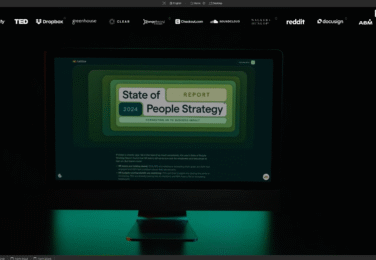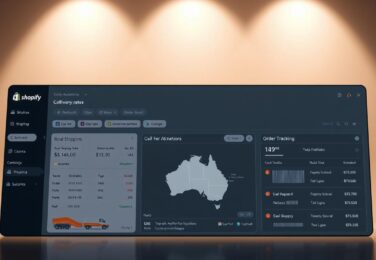WordPress Scaling Strategies for High-Traffic Websites

Table of Content
Did you know that over 455 million sites across the globe are powered by the same platform your business uses? That’s the massive scale of the ecosystem we’re operating in. For Australian businesses experiencing growth, this presents both opportunity and challenge.
When your online presence suddenly attracts attention, can your platform handle the surge? Many local businesses face this exact scenario during peak periods or viral moments. The transition from steady traffic to massive volumes can break an unprepared system.
zWe’ve seen how proper planning transforms standard platforms into high-performance engines. This isn’t just about avoiding crashes—it’s about securing revenue and maintaining competitive advantage. Your digital storefront must perform consistently, no matter how many visitors arrive.
Our guide addresses the unique scaling challenges faced by Australian enterprises. We combine technical expertise with practical implementation guidance. You’ll understand both the what and why behind each recommendation.
Whether you’re preparing for anticipated growth or managing current surges, we provide the roadmap for confident scaling. Let’s build a foundation that grows with your success.
Key Takeaways
- Essential strategies to handle massive traffic volumes
- Addressing unique Australian business challenges
- Transforming standard platforms into high-performance solutions
- Protecting revenue during traffic surges
- Practical implementation guidance for sustainable growth
- Maintaining speed and user experience under pressure
- Building competitive advantage through technical excellence
Introduction to High-Traffic WordPress Scaling
As digital traffic becomes increasingly unpredictable, Australian businesses face the critical challenge of preparing their online platforms for unexpected surges. This guide addresses that challenge head-on, providing practical solutions for sustainable growth.
Overview and Purpose of the Guide
We’ve created this comprehensive resource to bridge the gap between technical complexity and practical implementation. Our approach transforms theoretical concepts into actionable strategies that deliver real results.
This guide covers the complete scaling journey from initial assessment to advanced optimisation. You’ll learn to build systems that support your business objectives while remaining cost-effective.
Target Audience and What You’ll Learn
This resource is designed for business owners, marketing managers, and web developers managing high-traffic platforms. Whether you handle your site internally or work with partners, you’ll find valuable insights here.
According to recent employment data, the field of web development is growing rapidly. Professionals in this space can expect strong career opportunities with competitive compensation packages.
You’ll gain practical knowledge about:
- Fundamental scaling principles for consistent performance
- Australian-specific considerations including regional hosting
- Advanced caching mechanisms and security hardening
- Revenue protection during critical traffic periods
| Scaling Aspect | Before Optimisation | After Implementation | Business Impact |
|---|---|---|---|
| Page Load Speed | 3-5 seconds | Under 2 seconds | Higher conversion rates |
| Traffic Capacity | Limited surges | Enterprise-level handling | Revenue protection |
| User Experience | Inconsistent | Reliable performance | Improved engagement |
| Search Rankings | Variable | Consistent improvement | Increased visibility |
Our experience shows that successful scaling requires understanding both technical requirements and business growth patterns. This guide provides the foundation for building competitive advantage through technical excellence.
Understanding WordPress as a Content Management Engine
Successful scaling begins with a deep understanding of how your content management system fundamentally operates. We need to establish this foundation because your scaling approach depends entirely on how the platform stores, processes, and delivers content to users.
WordPress Basics: Themes, Plugins and Blocks
The platform operates as an engine combining several key layers. The database stores all your dynamic content, user information, and configuration settings. This becomes critical for high-traffic sites where database queries can create bottlenecks.
Themes control your site’s visual presentation and interface. Modern Block Themes offer significant flexibility compared to older approaches. Users can edit all site parts through the block editor without needing code modifications.
Plugins extend functionality without modifying core files. They provide modular solutions for everything from contact forms to advanced caching. The official repository contains over 60,000 free options, while premium plugins offer enterprise-level features and support.
Advantages of Managed Hosting and Local Development
Managed hosting solutions eliminate much technical complexity. They provide pre-configured environments with automatic updates and security monitoring. This allows you to focus on content and business objectives rather than server administration.
Local development environments let developers build and test sites safely before deployment. They provide space to experiment with customisations and test plugin compatibility. This approach prevents risks to your live site during optimisation.
Understanding these components helps make informed scaling decisions. Each part—database, core, themes, and plugins—presents different optimisation opportunities as traffic increases.
Scaling Strategies for High-Traffic Websites
Australian businesses facing sudden traffic spikes need hosting solutions that automatically adapt to changing visitor volumes. We’ve seen how the right infrastructure transforms potential crashes into growth opportunities.
Managing Traffic Surges with Optimised Hosting
Your hosting environment represents the most critical factor in scaling success. Even perfectly optimised code cannot overcome inadequate server resources during peak traffic periods.
We evaluate hosting options against four essential criteria. Performance must match your traffic patterns. Security protects your data and users. Cost should align with your budget. Reliability ensures consistent uptime during critical business moments.
| Hosting Type | Performance During Surges | Security Level | Cost Efficiency |
|---|---|---|---|
| Shared Hosting | Often fails under load | Basic protection | Low initial cost |
| Managed Services | Automatic scaling | Enterprise security | Higher value |
| Dedicated Servers | Consistent performance | Customisable | Premium investment |
Shared environments frequently struggle during traffic spikes. Providers allocate insufficient resources across too many sites. This creates slow response times or complete outages.
Managed WordPress hosting services offer dedicated resources and automatic scaling. They ensure your site remains responsive regardless of visitor numbers. Independent tests show providers achieving 100% uptime with flawless performance.
“Quality hosting transforms traffic surges from business threats into revenue opportunities.”
Security becomes increasingly vital as your traffic grows. High-traffic sites present attractive targets for attacks. Any breach during peak periods can cause massive revenue losses.
Cost considerations should include total ownership value. Factor in monthly fees, management time, and opportunity costs from slow page loads. The right hosting investment protects your revenue during critical growth phases.
WordPress Development
Custom development separates basic sites from high-performance platforms that handle traffic surges. We guide businesses through the essential coding skills needed for tailored solutions.

Beginner’s Guide to Core Coding and Customisation
Successful development requires proficiency in four core languages. HTML structures your content while CSS controls visual presentation.
PHP serves as the backbone for server-side logic and platform interactions. JavaScript creates dynamic user experiences without page reloads.
Understanding these languages enables you to build custom functions that execute efficiently. This foundation supports scalable solutions as your traffic grows.
Leveraging Custom Plugins and Themes for Scalability
Custom plugin development provides the most scalable approach to adding functionality. Plugins remain separate from your theme and survive updates.
The WordPress Plugin API offers hooks that integrate your code seamlessly. Actions perform tasks during specific events while filters modify data values.
| Development Approach | Scalability Impact | Maintenance Requirements | Performance Optimisation |
|---|---|---|---|
| Custom Plugins | High flexibility | Independent updates | Query optimisation |
| Custom Themes | Complete control | Regular testing | Asset loading |
| Pre-built Solutions | Limited customisation | Vendor dependency | Generic settings |
Theme development gives complete control over your site’s presentation layer. This enables performance optimisations generic themes cannot provide.
Following coding standards ensures your custom code remains an asset rather than liability. Proper prefixing and secure data handling become critical under high traffic.
Essential Techniques for Website Customisation
Customisation separates average websites from high-performing platforms that truly serve your business objectives. We focus on practical adjustments that deliver measurable improvements.
Improving Site Performance with Expert Tweaks
Our approach targets three key areas: reducing server load, optimising asset delivery, and implementing intelligent caching. These adjustments ensure your platform handles traffic surges effectively.
Performance enhancements include database query optimisation and PHP opcode caching. We also implement object caching for frequently accessed data. These techniques significantly reduce page load times.
Asset optimisation involves image compression and modern format selection. We minify CSS and JavaScript files to reduce HTTP requests. Critical CSS inlining accelerates initial rendering.
Contact hello@defyn.com.au When You Need Customisation Help
Complex customisation often requires specialised expertise. Our team handles multi-server configurations and advanced caching layers. We ensure solutions are maintainable long-term.
Struggling with implementation challenges? Contact hello@defyn.com.au for expert guidance. We help Australian businesses achieve their scaling objectives with proven solutions.
Our client engagements begin with comprehensive assessments. We balance performance, security, and user experience for sustainable results.
Performance Optimisation and Scalability Techniques
Multi-layered caching strategies transform ordinary websites into resilient engines capable of handling unpredictable visitor volumes. We implement sophisticated approaches that maintain dynamic functionality while dramatically reducing server load.
Implementing Advanced Caching Mechanisms
Effective caching operates across multiple levels to optimise your web platform. Browser caching stores static assets locally, while page caching serves pre-generated content to most visitors.
Object caching stores database results in memory for rapid retrieval. This approach reduces query execution time significantly. Opcode caching eliminates PHP compilation overhead on every request.
Content Delivery Networks extend your strategy globally. Australian visitors receive assets from nearby servers rather than overseas origins. This dramatically reduces latency and improves user experience.
| Caching Type | Performance Impact | Implementation Complexity | Server Load Reduction |
|---|---|---|---|
| Browser Caching | Repeat visitor speed | Low | 20-30% |
| Page Caching | First-time load speed | Medium | 60-70% |
| Object Caching | Database performance | High | 40-50% |
| CDN Implementation | Global access speed | Medium | 25-35% |
Database optimisation complements caching by ensuring uncached queries execute efficiently. Proper indexing and query result caching provide additional performance gains.
Performance monitoring tools help measure optimisation impact. They identify bottlenecks through server response analysis and real user monitoring. This ensures your site maintains excellent performance as traffic grows.
Maintaining Security and Keeping Updates Current
Security protocols form the bedrock of sustainable high-traffic website operations. We treat update management as a non-negotiable discipline rather than an optional task.
High-traffic platforms face amplified risks when vulnerabilities emerge. What might cause minor issues on smaller sites can lead to catastrophic breaches at scale.
Best Practices for Secure WordPress Operation
Regular updates address security vulnerabilities while improving performance. Core platform updates receive systematic testing through managed hosting providers before deployment.
Plugin and theme updates require more careful handling. Third-party code quality varies significantly, making automated testing tools invaluable for detecting conflicts.
We recommend establishing formal update schedules with staged deployments. Testing in development environments first prevents live site disruptions.
Security extends beyond updates to include strong authentication and monitoring. Regular encrypted backups enable rapid recovery if incidents occur.
PHP version updates deserve special attention for their performance benefits. Developers may need to resolve compatibility issues with older custom code.
Database security includes strong passwords and access restrictions. Activity monitoring helps detect unusual patterns that might indicate breaches.
Enhancing User Experience for Better Engagement
Your website’s ability to retain visitors during traffic surges depends heavily on front-end experience optimisation. We focus on practical improvements that deliver measurable engagement benefits.
Successful platforms combine visual appeal with seamless functionality. This balance keeps users engaged while supporting your business objectives.
Effective Use of Front-End Tools and Plugins
The Block Editor revolutionises content creation through visual, component-based building. Users assemble pages using pre-formatted blocks that maintain consistent styling.
This approach eliminates the need for shortcodes or custom HTML. Content creators can build sophisticated layouts without technical expertise.

JavaScript creates dynamic functionalities like form validation and image sliders. CSS controls presentation aspects including layout and colors.
Careful plugin selection remains essential for maintaining performance. We evaluate options based on update frequency and support quality.
Improving Accessibility and Loading Speed
Accessibility improvements benefit all users while ensuring compliance with Australian standards. These include proper semantic structure and keyboard navigation support.
Loading speed optimisation requires addressing multiple factors simultaneously. Server response time and asset delivery both impact perceived performance.
| User Experience Factor | Optimisation Approach | Engagement Impact | Implementation Priority |
|---|---|---|---|
| Page Load Speed | Caching and compression | Reduces bounce rates | High |
| Mobile Responsiveness | Responsive design testing | Improves mobile engagement | High |
| Accessibility Compliance | Semantic HTML structure | Expands audience reach | Medium |
| Interactive Features | JavaScript optimisation | Increases time on site | Medium |
We recommend establishing clear benchmarks through analytics review. This helps identify pain points in your current implementation.
Style consistency across your site reinforces brand identity while improving usability. The Block Editor facilitates this through controlled design variations.
Conclusion
Scaling your digital platform requires a systematic approach that transforms potential bottlenecks into competitive advantages. We’ve covered essential strategies for handling high-traffic volumes while maintaining performance, security, and user experience.
This comprehensive guide provides a roadmap for developers building resilient websites. The steps outlined help whether you’re managing your own site or working on client projects.
Remember that optimisation represents an ongoing process rather than a one-time effort. Continuous monitoring and refinement ensure your platform evolves with changing traffic patterns and business needs.
The investment in proper scaling pays dividends through improved search rankings, higher conversion rates, and reduced crisis management. Each site presents unique challenges based on content type and user behavior.
When you need expert assistance with customisation or performance issues, our team stands ready to help. Contact hello@defyn.com.au to discuss your specific WordPress development challenges with experienced Australian developers.










